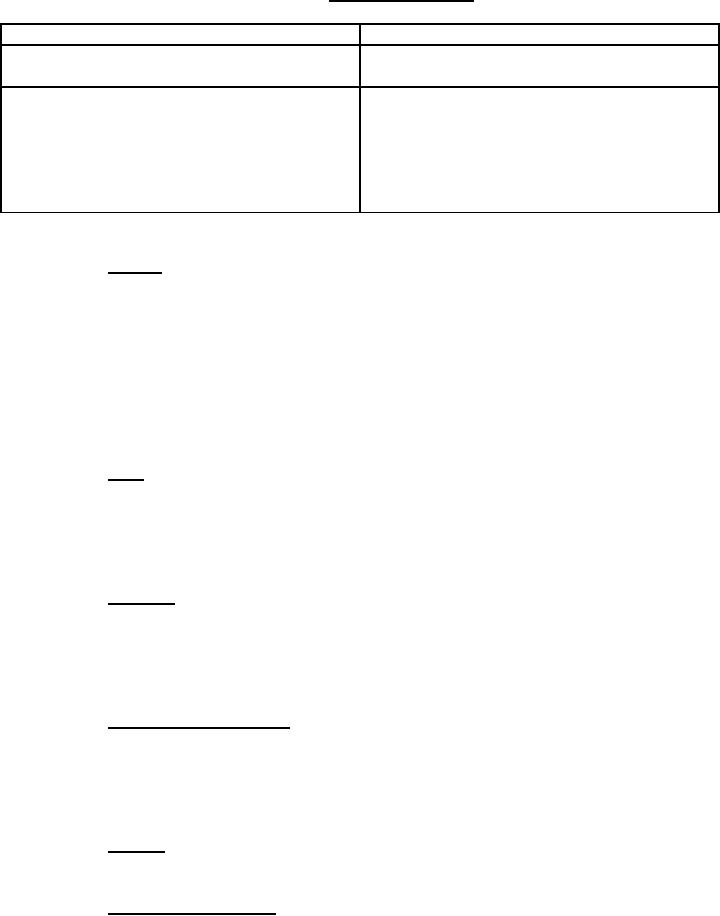
MIL-DTL-5882E
TABLE II. Pressure transmitter.
Test
Tolerance ± psi
Vibration:
Pointer oscillation
0.50
Friction:
Room temperature
0.50
High temperature
0.75
Low temperature
1.00
Position error at 30 psi
0.50
Leak
0.10
4.5.3 Sealing. Pressure and vent connections shall be closed with suitable plugs for this
test. Each transmitter shall be immersed in a suitable deaerated liquid, such as water, within an
enclosure. The absolute pressure of the air above the liquid shall be reduced to 2.5 inches Hg.
Any bubbles coming from within the transmitter case shall be considered as leakage and shall be
cause for rejection. Bubbles which are the result of entrapped air in the various exterior parts of
the case shall not be considered as a leak. A wetting agent shall be used in the liquid to facilitate
removal of surface bubbles.
4.5.3.1 The sealing test of MIL-PRF-5350 may be used as an alternate method.
4.5.4 Leak. A pressure of 50 pounds per square inch shall be applied to the pressure
connection and a pressure of 20 pounds per square inch shall be applied to the vent connection.
The connecting tubes shall be completely sealed at a point within 2 inches of each connection.
During a period of one minute, the pointer shall not change its position by more than the
tolerance specified in Table II. This test may be combined with that of the scale error test.
4.5.5 Damping. A pressure sufficient to produce full scale test pointer deflection shall be
applied to the transmitter. A quick release valve shall be used to release the pressure. The time
interval for the change from 50 psi to 5 psi indication shall be 9 ± 3 seconds. The test shall be
conducted with lubricating oil with a viscosity of approximately 2,500 centistokes, such as grade
1005 oil at -65°F, or equivalent. The test shall be conducted at 77°F.
4.5.6 Suction and overpressure. The pressure port of the transmitter shall be subjected to
a pressure of 5 ± 0.5 inches Hg absolute for a period of one minute. The pressure port shall then
be subjected to a pressure of 100 psi for a period of ten minutes. Not less than 1 hour following
the overpressure, the transmitter shall be tested for scale errors as specified in the individual tests
on increasing pressures only. The scale error shall not exceed the tolerances specified in Table I.
4.5.7 Salt fog. After exposure to the specified salt fog test the transmitter shall be
examined for corrosion and subjected to the sealing test. No scale or friction error test shall be
required.
4.5.8 Power supply variation. Power supply variation tests shall allow fluctuations of ±
volts and ± 20 percent of the nominal frequency.
5
For Parts Inquires call Parts Hangar, Inc (727) 493-0744
© Copyright 2015 Integrated Publishing, Inc.
A Service Disabled Veteran Owned Small Business